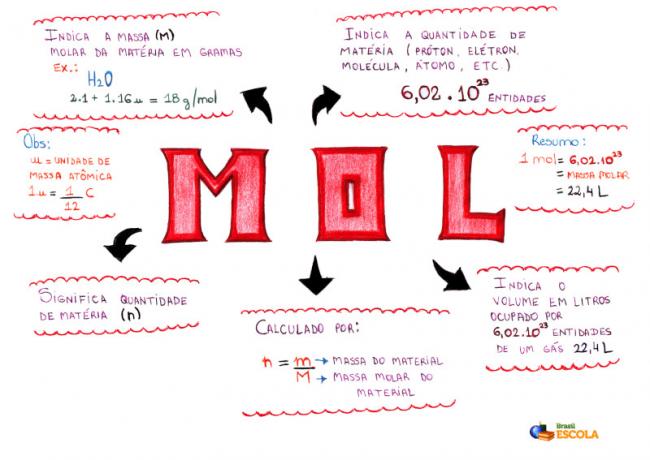O catharism was the biggest heresy diffused in some regions of Europe from the 12th century. This heresy was very strong in southern France and northern Italy, especially among the urban popular strata of medieval society. The spread of Catharism through these regions was so great that the Church called for a Crusade to persecute his followers and stop the growth of heresy. The Cathars are also known as the Albigenses in reference to the French city of Albi, one of the main centers of dissemination of Catharism.
Origins of Catharism
Catharism was a heretical doctrine originated in France, in the eleventh century, however, it was only after 1140 that this heresy gained strength throughout Europe. Considered the greatest heretical movement that emerged in the Low Middle Ages, Catharism was the heir of Gnostic doctrines that defended a vision dualist of the world.
According to Catharism, dualism manifested itself as follows: the Cathars believed that goodness existed only in the spiritual world and that the material world was essentially evil. Still in this conception, the world was a creation of an evil god or Satan. Historian Nachman Falbel attributes the rise of Catharism to cultural changes and religious strengthening in the 11th and 12th centuries.
With the growth of Catharism in southern France and northern Italy, the Cathar Church developed and established ecclesiastical authorities as bishops. Furthermore, large churches of this doctrine were built in Albi, Toulouse, carcasson, agent and Reasons. The heresy had a great adhesion of believers among the layerspopular, mainly among artisans and merchants, however, also converted members of the French nobility.
Cathar doctrine
The Cathars believed that the material world was bad for having been created by Satan. Therefore, all who inhabited this world should be restored through the penance and of the communion with God. Furthermore, it was believed that man would reincarnate in human or animal form until his soul found redemption, which took place after the spiritual baptism called the consolamentum.
The Cathar doctrine distinguished two types of believers: the “perfect” and the “believers”. The Perfect were people who had already found redemption and who led a life of asceticism (penance). For this, the Perfect abstained from many foods of animal origin, such as red meat, eggs and milk, and practiced chastity. This is because the Cathars condemned procreation and marriage, considering them evil and branded as the work of Satan.
Believers did not have the same life restrictions as the Perfect, however, they were supposed to show respect whenever they were in the presence of a Perfect. Catharism stipulated that Believers should confess their sins to the Perfects in a ritual called the apareliamentum. This public confession of sins to the Perfect ones, however, was not obligatory.
Do not stop now... There's more after the advertising ;)
For the Cathars, the human soul was actually a Angel who had been imprisoned by the evil god in a human body. Thus, with each new birth, they believed that a new angel had been imprisoned. Because of this belief, the Cathars condemned human marriage and procreation. Furthermore, they denied that Christ shared the same substance as the Father and considered him only an angel who volunteered to save men.
The Cathars also affirmed that the good god will triumph at the end of time over the evil god and, thus, all human souls will be definitively saved.
Crusade against the Albigenses
As this heresy grew in France and Italy, the Catholic Church mobilized to eradicate it. Thus, the Church's struggle against Catharism was distinguished in two moments:
Crusadespiritual (1147-1209)
CrusadeAlbigensian (1209-1229)
The Spiritual Crusade was the period when the Church fought Catharism through peaceful actions such as preaching, exhortations and excommunications. The Church's first action against this heresy was taken by Pope Callixtus II at the Council of Toulouse in 1119. Subsequently, a number of prominent Church priests were sent to the region. ? between them, Saint Bernard of Claraval.
The Albigensian Crusade was determined by Pope Innocent III, in 1209, after the papal emissary Pedro de Castelnau was assassinated in 1208, supposedly by a Cathar nobleman named Raimundo VI. As a result, the armies of the Christian nobles were summoned to fight the Cathars.
The struggle in southern France spanned twenty years and was marked by the extreme violence of the fighting, as demonstrated in destruction of Béziers, in 1209. During these twenty years, the great Cathar centers were attacked, and the battles were won, sometimes by Catholic troops, sometimes by Cathars. In 1229, a peace agreement was signed between Cathars and Catholics, in which heretical nobles submitted to Catholic authorities.
Despite being weakened, Catharism continued to exist in the region and was constantly targeted by the inquisitors. From the reign of Felipe the Beautiful, the followers of the heretical doctrine suffered severe persecution, which would have led to the disappearance of this heresy in France, in the 14th century.
By Daniel Neves
Graduated in History


